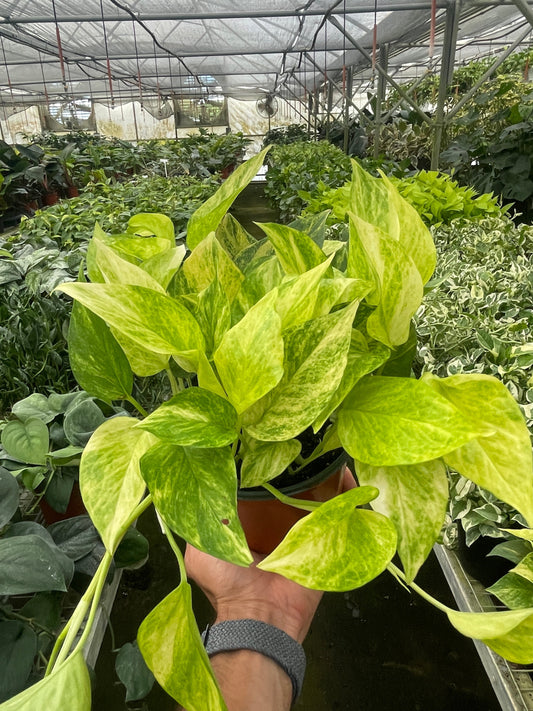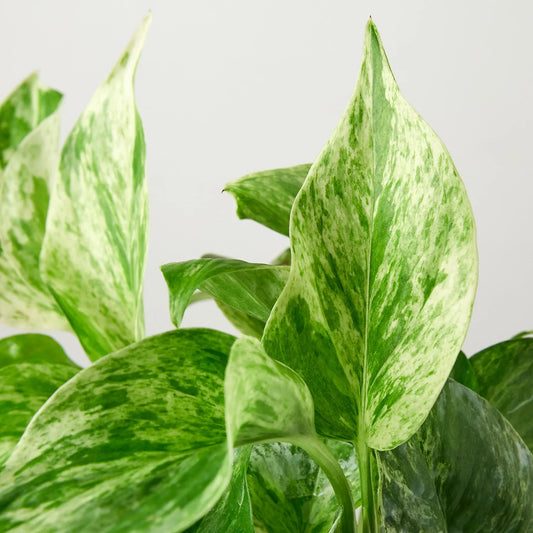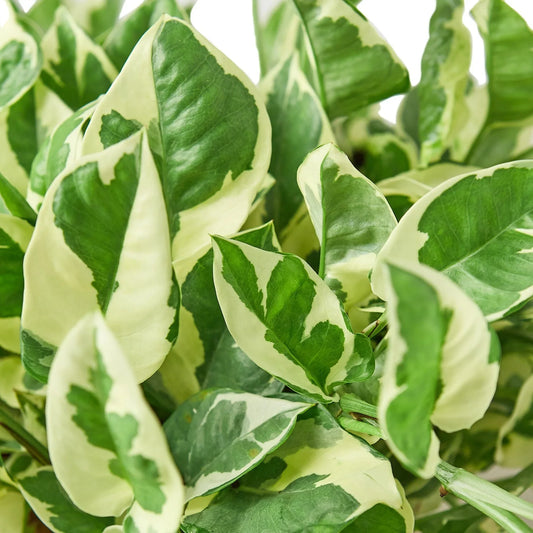Common Ficus Pests (And What To Do About Them)
Cafe Planta Team
Taking care of a ficus can feel like having an extra family member—one that doesn't talk back but still demands attention. While these beautiful plants are a favorite among plant parents for their glossy leaves and elegant stature, they do occasionally invite some unwanted guests. Yes, we're talking about pests. It's the little critters that can turn your ficus from fab to drab if you're not careful.
In this blog post, we'll take a closer look at some of the most common pests that might decide to make your ficus their new home. More importantly, we'll discuss how you can evict these tiny squatters and keep your ficus looking its best. So, grab a cup of coffee, and let's get started on this plant-saving mission!
Spider Mites: The Tiny Troublemakers
Spider mites might be tiny—often no bigger than a pinhead—but they can cause significant damage to your ficus. These pests thrive in dry conditions and can quickly multiply, leading to a serious infestation if left unchecked. They tend to hang out on the underside of leaves, sucking out the sap and leaving behind a web-like residue that's anything but charming.
How can you tell if your ficus has spider mites? Look for signs like yellowing leaves, a dusty appearance on leaves, or small web-like structures. If you suspect an infestation, hold a white piece of paper under a leaf and gently tap it. If you see tiny specks moving on the paper, it's likely you have spider mites.
To manage a spider mite problem, start by isolating your ficus from other plants to prevent the spread. Then, give your plant a good shower with lukewarm water to wash away as many mites as possible. You can also use insecticidal soap or neem oil, which are both natural and effective options for controlling these pests. Be sure to follow the product's instructions closely for the best results.
Scale Insects: The Sneaky Suckers
Scale insects are another common foe of the ficus. These pests attach themselves to the stems and leaves, looking like small, brown, or white bumps. They can be tricky to spot at first because they don't move around much, but their presence can lead to yellowing leaves and stunted growth.
To tackle scale insects, you can start by manually removing them. Use a soft cloth or your fingernail to gently scrape them off. For a more thorough approach, consider using a cotton swab dipped in rubbing alcohol to remove any stubborn scales. This method can be time-consuming but is effective.
For larger infestations, you might want to use a horticultural oil spray, which smothers the insects and prevents them from causing further damage. Regularly inspect your ficus to catch any new scale insects before they become a big problem.
Mealybugs: The Cottony Culprits
If you've noticed white, cotton-like patches on your ficus, you're likely dealing with mealybugs. These pests love to hide in the crevices and undersides of leaves, sucking the sap and weakening the plant over time. Besides the cottony deposits, mealybugs can also lead to leaf drop and yellowing.
To get rid of mealybugs, start by isolating your plant and then manually removing as many as you can with a cotton swab soaked in alcohol. This will help dissolve their protective coating and kill them.
You can also use a systemic insecticide that's specifically designed to combat mealybugs. This approach can be effective for larger infestations but should be used with caution and according to the product's directions. Regularly misting your ficus can also help prevent future infestations, as mealybugs prefer dry conditions.
Aphids: The Green Goblins
Aphids are small, pear-shaped insects that come in a variety of colors, including green, black, and brown. They're known for their rapid reproduction and can quickly overrun your ficus, leading to curled leaves and stunted growth.
If you spot these little green goblins on your plant, the first step is to give your ficus a good rinse with water to knock off as many aphids as possible. You can also introduce natural predators like ladybugs to your indoor garden, as they love to feast on aphids.
Insecticidal soap or neem oil can be used as a follow-up treatment to control any remaining aphids. Be sure to apply it thoroughly to all surfaces of the plant, including the undersides of the leaves, where aphids like to hide.
Fungus Gnats: The Annoying Flyers
While fungus gnats are more of a nuisance than a serious threat to your ficus, they can still be quite irritating. These tiny, black flies buzz around the soil and can be a sign of overwatering, as they thrive in moist environments where fungal growth can occur.
To control fungus gnats, start by allowing the top layer of soil to dry out between waterings. This will help disrupt their breeding cycle. You can also use sticky traps to catch adult gnats and reduce their numbers.
If the problem persists, consider using a biological control like beneficial nematodes, which are microscopic worms that prey on fungus gnat larvae in the soil. This natural method is safe for your plants and helps reduce the gnat population effectively.
Thrips: The Tiny Tormentors
Thrips are slender, winged insects that can cause significant damage to your ficus by puncturing plant cells and sucking out the contents. This results in silvery streaks or patches on the leaves, along with distorted growth.
To manage a thrip infestation, start by trimming any heavily infested leaves and disposing of them properly. You can then use a sticky trap to catch adult thrips and reduce their numbers.
Insecticidal soap or neem oil can be applied to control the remaining thrips. Be sure to spray the entire plant, especially the undersides of the leaves, where thrips are most likely to be hiding.
Whiteflies: The Tiny White Flakes
Whiteflies are small, white insects that resemble tiny moths. They tend to congregate on the undersides of leaves, where they suck sap and excrete a sticky substance called honeydew, which can lead to sooty mold on your ficus.
If you notice a cloud of white specks flying up when you disturb your ficus, you've likely got a whitefly problem. To control these pests, first, try shaking the plant gently to dislodge them and vacuuming them up.
Introduce ladybugs or lacewings, both of which are natural predators of whiteflies, to your indoor garden. Insecticidal soap or neem oil can also be used as a treatment, ensuring you cover the entire plant thoroughly.
Preventive Measures: Keeping Pests at Bay
While it's important to know how to deal with pests when they appear, prevention is always the best strategy. Here are some tips to help keep your ficus pest-free:
- Regularly Inspect Your Plants: Make it a habit to check your ficus for signs of pests or damage every time you water. Early detection is key to preventing infestations from getting out of hand.
- Maintain Proper Humidity: Many pests, like spider mites, thrive in dry conditions. Keep humidity levels consistent by misting your ficus or using a humidifier, especially during the winter months.
- Avoid Overwatering: Overly wet soil can attract pests like fungus gnats. Make sure your ficus has well-draining soil and only water when the top inch of soil feels dry to the touch.
- Quarantine New Plants: Before introducing new plants to your indoor garden, keep them isolated for a week or two to ensure they aren't carrying any pests.
Final Thoughts
Dealing with pests on your ficus can feel overwhelming, but with a little patience and the right approach, you can keep your plant healthy and thriving. Remember, prevention and early detection are your best allies in this battle.
At Cafe Planta, we believe in the power of plants to bring joy and beauty into our lives. If you have any questions or need advice on plant care, don't hesitate to email us or reach out on Instagram. We're here to support you on your plant journey and help you create a thriving indoor garden.



















